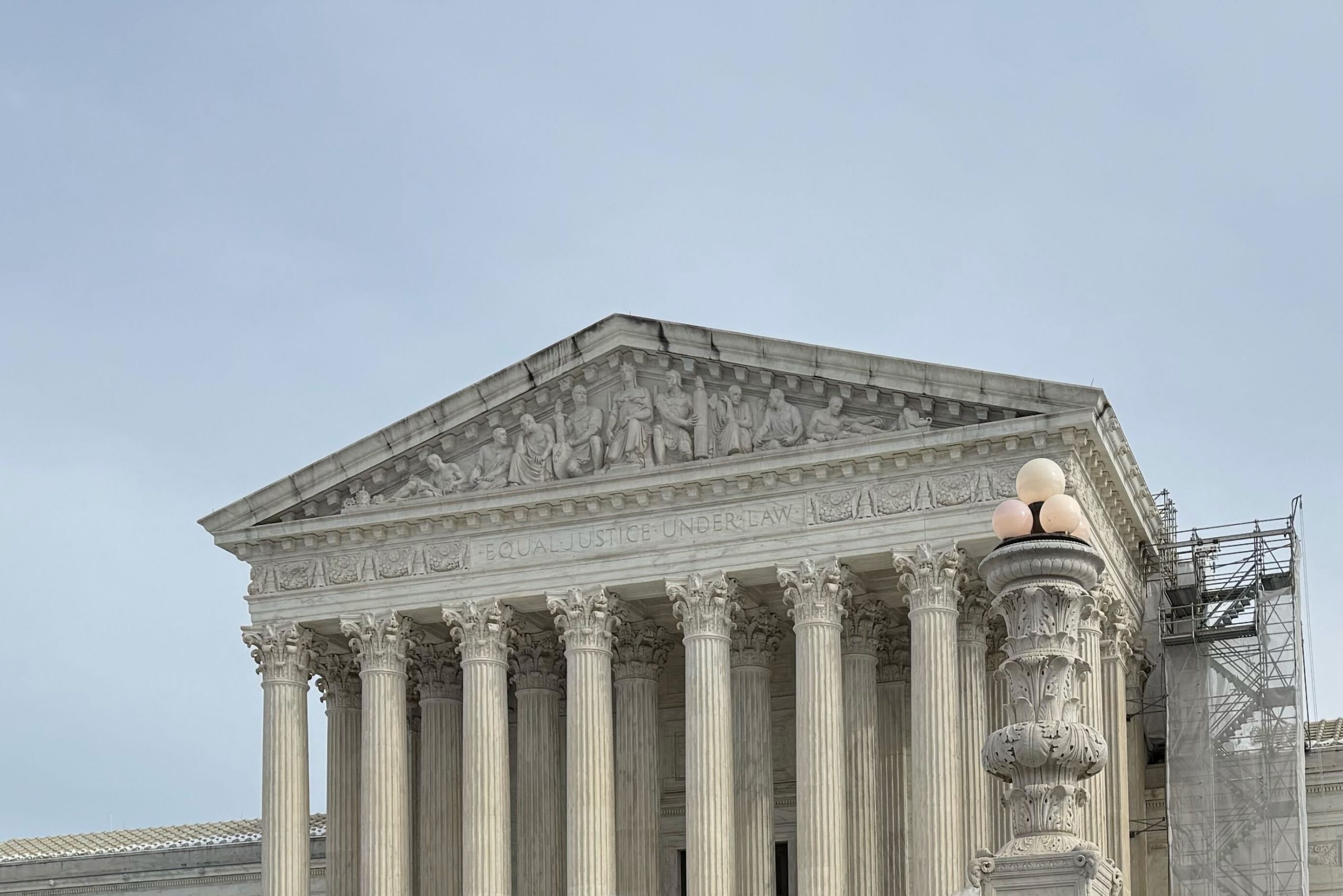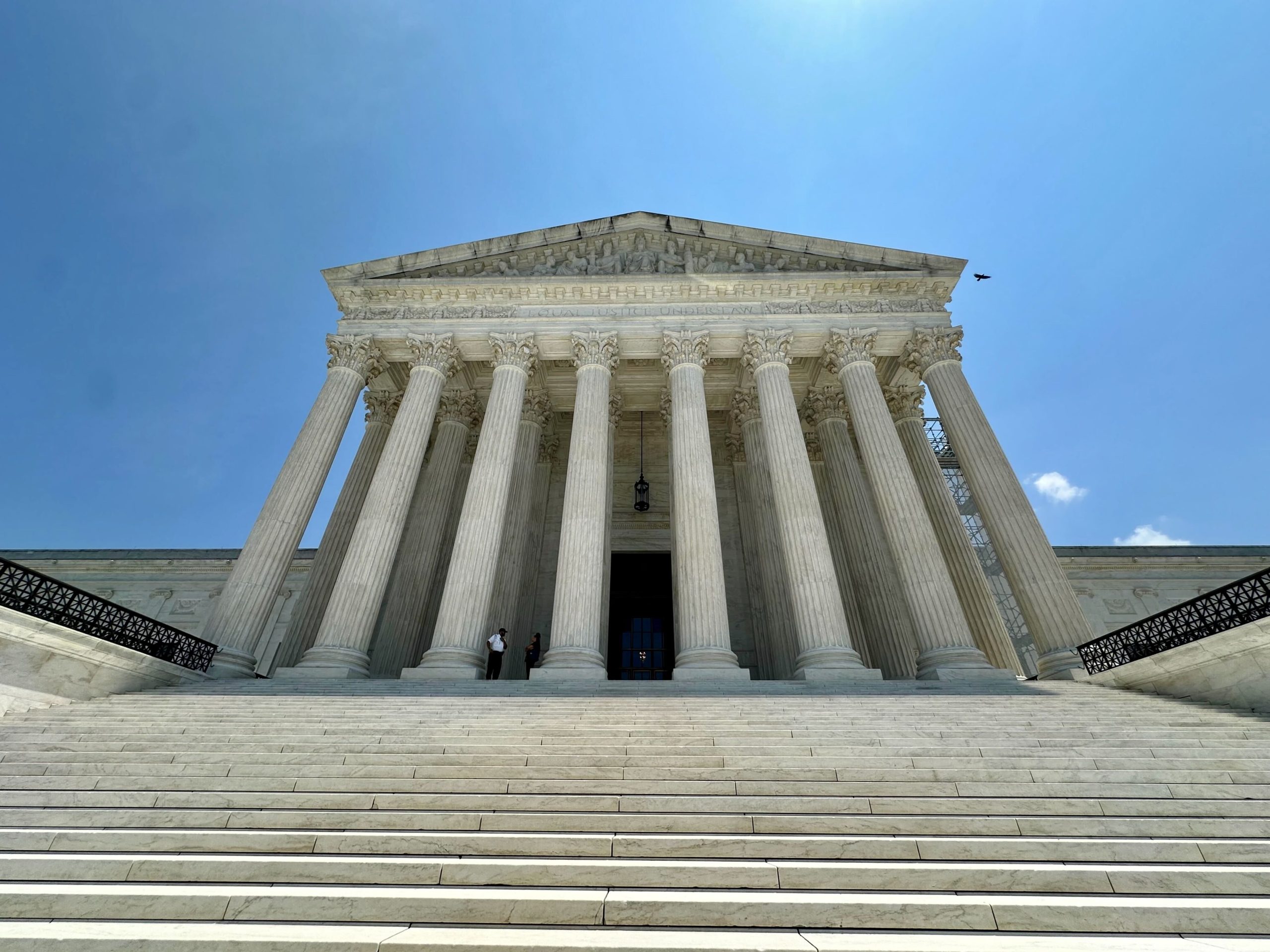Justices will assess federal labor protections for National Guard technicians
CASE PREVIEW
on Jan 6, 2023
at 12:10 pm
A biomedical equipment technician with the Ohio National Guard prepares for a readiness inspection in Columbus, Ohio. (Ohio National Guard photo by Master Sgt. Ralph Branson via Flickr)
Ohio Adjutant General’s Department v. Federal Labor Relations Authority, which the Supreme Court will hear on Monday, involves the collective-bargaining rights of “dual status” military technicians who work in the Ohio National Guard. The court will decide whether these workers can receive protection from the Federal Labor Relations Authority, the federal agency that enforces the collective-bargaining rights of federal employees.
Under the U.S. Constitution, the National Guard is a joint state-federal endeavor. As a result of this embedded structure, the technicians have a somewhat complicated dual status: Their employment is an amalgam of federal and state, and of civilian and military, duties. Enlistment in the Guard is mandatory for technicians, and they wear a state military uniform when performing state military duties. But they are also provided the benefits and rights of federal civilian employees when engaging in a wide variety of “civilian-like” clerical, administrative, and technical roles in support of the Guard’s daily operations. The technicians in this case had been unionized for 45 years when the Guard, in effect, terminated its collective-bargaining relationship with their union, the American Federation of Government Employees, Local 3970, AFL-CIO.
The case begins with a common “union avoidance” narrative. The Guard and the union had entered into a long series of collective-bargaining agreements, most recently in 2011, and the most recent agreement was slated, absent renewal, to expire in 2014. The parties did not, however, renew the agreement. Instead, the guard, in 2016, informed the union through a memorandum, later widely disseminated, that it did not deem itself bound by any provision of the expired agreement (despite a prior understanding on the continued negotiability of the bargaining topics covered in the 2011 agreement). The guard, moreover, questioned the applicability to the technicians of various federal labor statutes, especially the Federal Service Labor-Management Relations Statute, a 1978 law that established collective-bargaining rights for most employees of the federal government.
After distributing the memorandum, the Guard began terminating union-dues deductions authorizations. First, the Guard told the union it did not have the required authorization forms on file for most of the union’s dues-paying members. (Under federal law, union dues could never have been lawfully deducted from pay without a formal, written employee authorization). The Guard could not explain what happened to the forms, and followed up its notification to the union by sending letters to members of the bargaining unit, including the president of the local union, asking them to either provide a copy of the original form or to resubmit the form within 60 days. If members did not submit a new form, the Guard completed a different, “termination” form for those employees, and signed the forms on their behalf without asking for consent. As a result, union-dues deductions for around 89 bargaining-unit employees were terminated between September 2016 and June 2017.
In April 2017, the Guard sent a letter to about 48 bargaining-unit employees, 41 of whom had a written dues form on file. In this letter, the Guard recommended to employees that they terminate their union-dues allotments because a collective-bargaining agreement no longer existed. In roughly the same time frame, the Guard also, allegedly, unilaterally changed technicians’ conditions of employment, and failed to comply with multiple mandatory provisions of the collective-bargaining agreement.
Not surprisingly, the union challenged this effective Guard withdrawal of recognition of the union’s employee representation status — the union has called it a “repudiation” — by filing several “unfair labor practice” charges with the Federal Labor Relations Authority. Eventually, the FLRA issued complaints alleging that the Guard refused to “negotiate in good faith” when it claimed it was no longer bound by the statute or the 2011 collective-bargaining agreement. The FLRA also alleged that the Guard refused to negotiate in good faith when it unilaterally changed union-dues deductions policies and, as a result, that the Guard “interfered with, restrained, and coerced employees in the exercise of their rights under the Statute.” (As part of the ongoing litigation, the Guard claims that it has no authority under federal law to remedy this violation).
The union filed another unfair-labor-practice charge with the FLRA in April 2017. After investigating the charge, the FLRA filed a second complaint on behalf of the union and consolidated this new case with the first one. This complaint also alleged that the Guard interfered with, restrained, and coerced employees in the exercise of their rights under the statute, this time by recommending to employees the termination of valid union-dues deduction authorizations. The charge essentially alleged that the Guard was communicating the futility of union membership under the circumstances.
The administrative law judge presiding over the FLRA’s complaints in an administrative hearing found several violations of the statute and ordered the Guard to “cease and desist” from: (1) failing or refusing to recognize and comply with the mandatory terms of the expired collective bargaining agreement (which continued to apply); (2) failing or refusing to maintain existing personnel policies, practices, and matters; (3) unlawfully terminating authorized union-dues deductions, or threatening to do so; and (4) informing employees, supervisors, and managers that the Guard is not bound by statute and that the collective-bargaining agreement is a nullity. The judge also ordered the Guard to post and disseminate an FLRA notice to employees (promising to no longer violate the statute); to reinstate dues deductions for the affected employees; to reimburse the union for lost dues deductions; and to rescind any unlawful changes to the civilian technicians’ conditions of employment. The U.S. Court of Appeals for the 6th Circuit upheld these determinations, and the Guard sought review at the Supreme Court.
The Guard defends against the FLRA charges on jurisdictional grounds. The Guard first notes that the Civil Service Reform Act of 1978 (which includes the Federal Service Labor-Management Relations Statute) does not apply to employees of non-agencies. Because it is a state rather than a federal agency, the Guard argues, the FLRA has no enforcement authority against it. Under the Reform Act, the Guard continues, the FLRA may not issue orders to any employer that is not a federal agency.
This argument — to be revisited momentarily — at first blush appears decisive, and perhaps it would be in other contexts. The employees involved in this case, however — dual-status military technicians — have a unique status under federal law. One federal statute states: “For purposes of … any … provision of law, a military technician (dual status) is a Federal civilian employee.” And last year, in Babcock v. Kijakazi, the court confirmed that these technicians are “federal civilian employee[s] who provide[] technical or administrative assistance to the National Guard.” Thus, the Guard oversees employees whom Congress has deemed federal — at least when performing technician duties. The FLRA argues that it issues orders in connection with technicians as federal employees. Almost every federal circuit has accepted this position (and none has opposed it). Additionally, when the Guard supervises dual-status technicians, it does so as a statutory designee of the Department of the Army and of the Air Force. The Guard employs technicians functioning as federal employees on behalf of the federal government, and the authority of the FLRA is limited to issues arising from that employment. (The Civil Service Reform Act somewhat unhelpfully defines an employee as “an individual — employed in an agency.”)
In addition to the jurisdictional arguments premised on the status of its employees, the Guard argues that the FLRA lacks authority to enforce the statute against it. As the 6th Circuit summarized, “[t]he Guard contends that the FLRA lacks jurisdiction over the Guard because the Guard is not an executive agency under the Statute.” The 6th Circuit — in accordance with every other federal circuit that has considered the question — concluded that the Guard — a state agency — is a federal executive agency under the statute. This gets to the heart of the Guard’s argument. However the Guard’s employees may be characterized during a particular phase of employment, under the Reform Act an “agency” is defined as “an Executive agency …, the Library of Congress, the Government Publishing Office, and the Smithsonian Institution.” An executive agency, in turn, is defined as “an Executive department, a Government corporation, and an independent establishment.” From here, the Guard seems straightforwardly to argue that none of these telescoping definitions renders a state agency federal and that the FLRA is simply without jurisdiction to issue orders against the Guard.
The FLRA, on the other hand, argues that, because the Guard supervises technicians on behalf of federal departments, it is to that extent — as an employer of federal employees — a federal executive agency. It is an interesting problem that may retroactively have called into question Congress’s original decision to create dual-status employment in the interest of improving the working conditions of military technicians.






